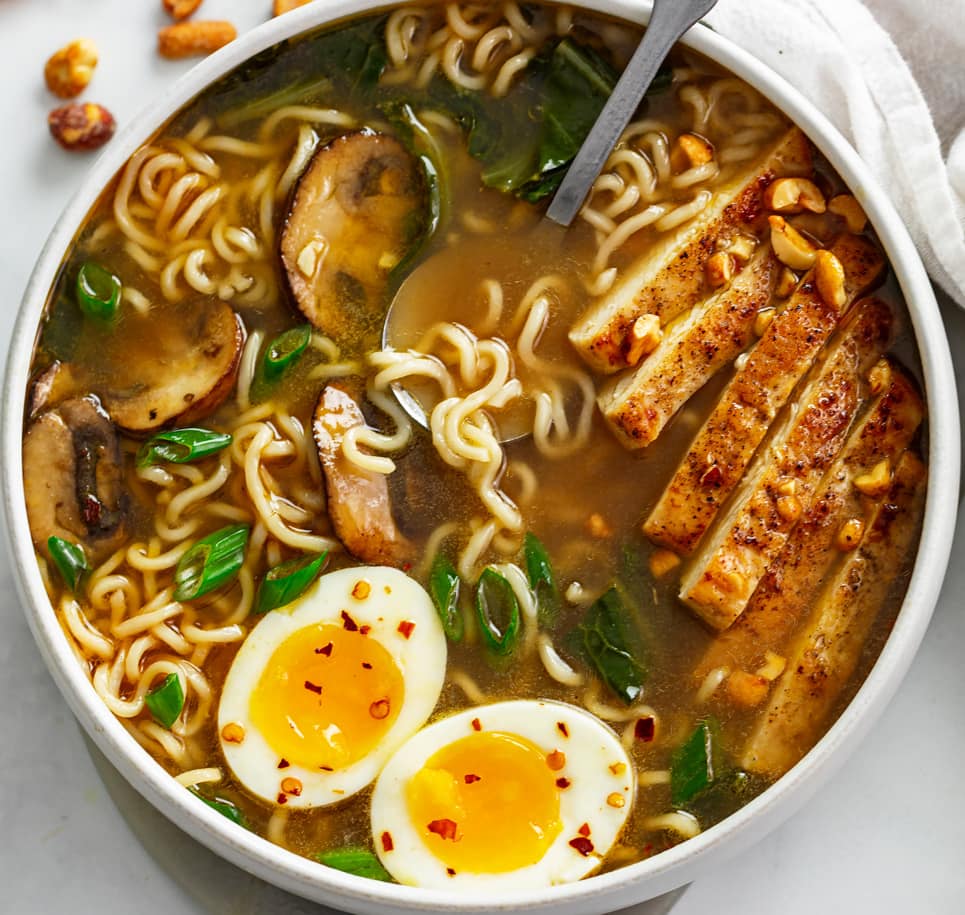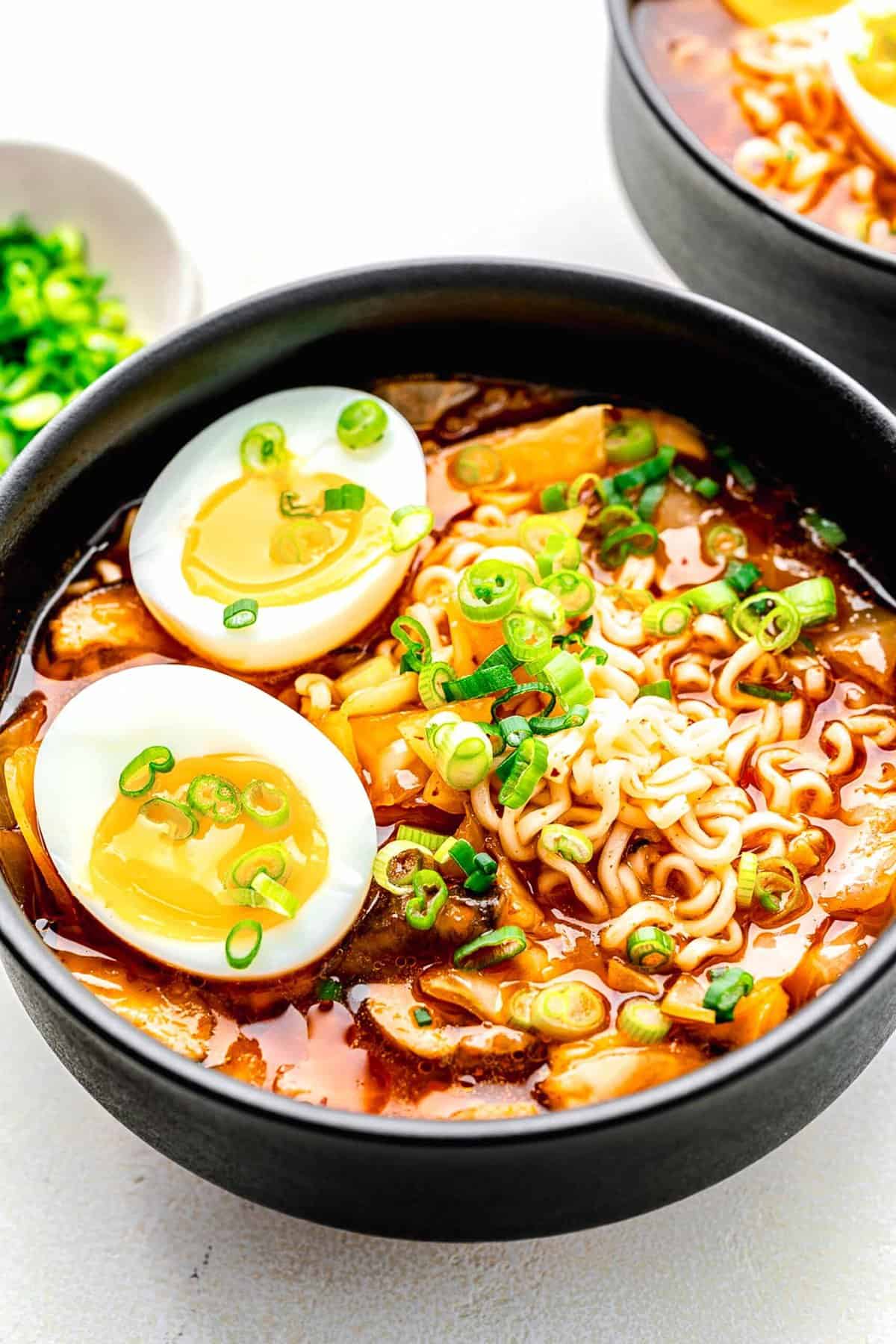Is that steaming bowl of ramen you're about to enjoy as safe as it looks? It's a question many of us might ponder, especially when thinking about leftovers or how our favorite takeout is handled. We all love a warm, comforting bowl, whether it's the delicious food from Ramen 101 in Antioch, CA, or a new spot like Bubblebee x Ramen in Ashburn, VA. But just like any other food, ramen can, in a way, become a breeding ground for tiny, unwanted guests if not treated with care. Knowing a little about ramen noodles bacteria can help you keep your meals tasty and safe.
From the savory broth to the tender noodles and various toppings, ramen is a complex dish, and that complexity means there are more places where food safety matters. Places like Ramen 101, where you can place your order at the cashier and get self-served water, are fast-paced, and that means quick handling is important. Even popular items like spam musubi, chicken katsu, and teri chicken bowls, which often go with ramen, need proper attention to temperature. So, it's almost good to know the basics.
Whether you're getting a sneak peek of your next meal online, ordering delivery, or just enjoying some very delicious ramen on a cold day, understanding how bacteria might affect your food is a big step towards enjoying it without worry. This guide will help you understand common concerns and how to make sure your ramen experience is always a good one, you know? It’s basically about being smart with your food.
Table of Contents
- What Are Ramen Noodles Bacteria?
- Where Do These Tiny Critters Come From?
- The Danger Zone for Ramen
- Signs Your Ramen Might Have Gone Bad
- Keeping Your Ramen Safe at Home
- What About Delivery and Takeout Ramen?
- Common Questions About Ramen Safety
- Enjoying Your Ramen with Peace of Mind
What Are Ramen Noodles Bacteria?
When we talk about ramen noodles bacteria, we're really talking about tiny living things that can make us sick if they grow too much in our food. These are often the same kinds of bacteria that cause food poisoning in other dishes. Think of things like Salmonella, E. coli, or Staphylococcus aureus. They are usually too small to see, smell, or taste, which is what makes them a bit tricky, you know?
One common culprit in dishes with rice or noodles, like ramen, is *Bacillus cereus*. This particular type of bacteria can form spores that survive cooking. If cooked food, like rice or noodles, is left at room temperature, these spores can wake up and multiply, producing toxins that cause illness. So, it’s actually a pretty important one to watch out for.
Another one to consider is *Clostridium perfringens*. This bacterium often grows in large batches of food, like stews or meat dishes, that are left to cool slowly. Since ramen broth often contains meat or is made in large quantities, it could be a concern if not handled right. These tiny organisms thrive in certain conditions, especially when food is left at room temperature for too long. Ramen, with its mix of broth, noodles, vegetables, and sometimes meat or eggs, offers a very good home for them if not handled correctly. For instance, the savory broth can be a rich environment, and toppings like chicken katsu or even tofu and bean sprouts can carry these tiny organisms. So, it's pretty important to be aware, you know?
These bacteria are microscopic, meaning you can't see them with your eyes. They don't always change the look, smell, or taste of your food either. This is why relying on your senses alone isn't enough to tell if your ramen is safe to eat. It’s about following good practices, more or less, to keep them from growing.
Where Do These Tiny Critters Come From?
Bacteria can come from many places. Sometimes, they are naturally present on raw ingredients, like uncooked chicken or eggs. For example, raw chicken often carries Salmonella. Even fresh vegetables can carry them from the soil, especially if they aren't washed well. When these raw ingredients are not cooked thoroughly, or if they touch other cooked foods, that's when problems can start. This is called cross-contamination, and it's a common way bacteria spread, you know?
Consider the preparation of dishes at a fast food ramen spot. If the same cutting board or knife is used for raw chicken and then for cooked vegetables or noodles without proper cleaning in between, bacteria can easily transfer. This is why professional kitchens, like those at Ramen 101 or Bubblebee x Ramen, have strict rules about separating raw and cooked foods and sanitizing surfaces. It's basically about keeping things very clean.
Another big source is human hands. If someone prepares food without washing their hands properly after using the restroom or handling raw meat, bacteria can easily transfer to the food. This is why places like Ramen 101, or any restaurant, need strict rules for cleanliness. Even at home, our own kitchens can be a source if we're not careful. Things like dirty sponges or dishcloths can also spread bacteria around. So, you can see why good hygiene matters a lot, you know?
Environmental factors also play a part. Dust, pests, and even dirty equipment can introduce bacteria into food. A clean kitchen environment, both at home and in restaurants, helps keep these tiny invaders at bay. It’s really about being mindful of everything that touches your food, you know?
The Danger Zone for Ramen
Bacteria multiply very quickly in what's known as the "danger zone." This temperature range is roughly between 40°F (4°C) and 140°F (60°C). If cooked ramen, or any food, stays in this zone for too long, the number of bacteria can grow to unsafe levels. This is why you often hear about cooling food quickly or keeping it hot, you know?
Imagine a delicious bowl of ramen, perhaps a full-bodied spicy miso ramen with tofu and bamboo shoot. If you leave it sitting on the counter after eating, the temperature slowly drops. As it cools down into that danger zone, any bacteria present start to have a party, doubling in number every 20 minutes. That's a pretty fast rate, actually.
A good rule of thumb is to not leave perishable food out for more than two hours. If it's a very warm day, like 90°F (32°C) or hotter, that time shrinks to just one hour. This applies to your ramen too. So, if you've finished your delicious ramen and there's some left, it's really important to think about getting it into the fridge quickly, as a matter of fact. Leaving it out for longer than these times significantly increases the risk of foodborne illness. It's just a simple way to keep yourself safe.
Signs Your Ramen Might Have Gone Bad
While bacteria that cause illness often don't leave obvious signs, there are things to look for that suggest your ramen is no longer good to eat. A sour smell, an unusual color, or a slimy texture are all big red flags. The noodles might seem mushy in a way, or the broth could look cloudy when it should be clear. These are signs that spoilage bacteria, which are different from the ones that make you sick, are at work, and they tell you to toss the food. It's usually better to be safe than sorry, you know?
For instance, if your garlic ramen broth looks murky when it was clear before, or if your chicken katsu topping has a strange, off-putting odor, these are strong indicators that the food has spoiled. You might also see mold growing on solid ingredients if it's been left for too long. These visual cues and smells are your body's way of telling you to avoid that meal. So, trust your senses for spoilage, but remember they don't always tell the whole story about safety, you know?
Sometimes, though, food can look and smell fine but still have harmful bacteria. This is why following proper food safety steps is so important, even if your ramen seems okay. You can't always trust your senses when it comes to these tiny organisms. This is especially true for bacteria like *Bacillus cereus* which produce toxins without necessarily changing the food's appearance. So, just a little caution goes a long way, you know?
Keeping Your Ramen Safe at Home
Making sure your ramen is safe starts right in your own kitchen. Whether you're making it from scratch or handling leftovers from a place like Ramen 101, there are simple steps you can follow. These steps help keep those unwanted ramen noodles bacteria from setting up shop in your meal. It's actually pretty easy to do once you get the



Detail Author:
- Name : Luther Quitzon
- Username : lcrist
- Email : monserrat.collins@hotmail.com
- Birthdate : 1982-10-27
- Address : 32047 Pagac Extensions Port Nedbury, NJ 04960-7027
- Phone : +14345575982
- Company : Feeney PLC
- Job : Financial Specialist
- Bio : Iure ut natus odio et. Et debitis in accusamus aut. Odit fugit qui non hic.
Socials
linkedin:
- url : https://linkedin.com/in/hipolito.casper
- username : hipolito.casper
- bio : Qui ut ratione earum asperiores.
- followers : 943
- following : 2737
tiktok:
- url : https://tiktok.com/@hcasper
- username : hcasper
- bio : Quo quia beatae totam architecto quibusdam et blanditiis.
- followers : 3275
- following : 1434
facebook:
- url : https://facebook.com/hipolito2272
- username : hipolito2272
- bio : Vel id molestiae quibusdam eos quo.
- followers : 1067
- following : 2446
twitter:
- url : https://twitter.com/hipolito_casper
- username : hipolito_casper
- bio : Exercitationem voluptatem ex ut laboriosam esse qui. Beatae voluptas perspiciatis ut sunt omnis. Distinctio reprehenderit rerum nihil iusto.
- followers : 5350
- following : 1095